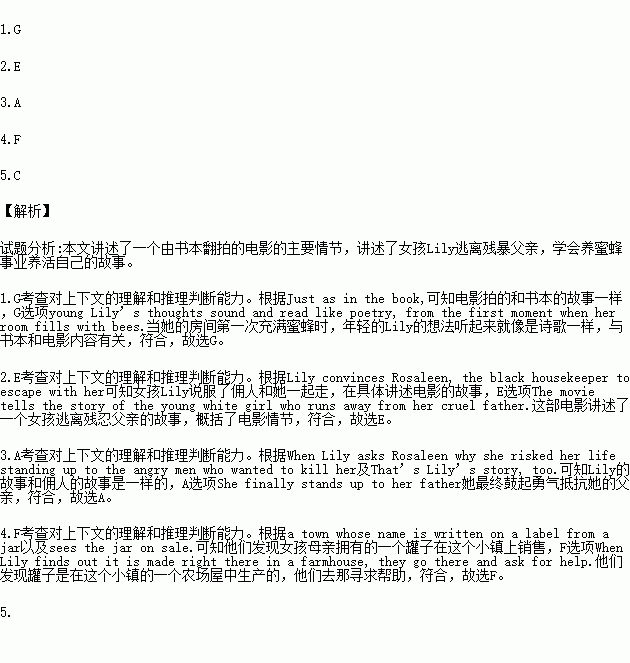题目内容
根据短文内容,从短文后的选项中选出能填入空白处的最佳选项。选项中有两项为多余选项。
Based on Sue Monk Kidd’s best selling novel, The Secret Life of Bees is a movie of hope and faith for even the unloved and oppressed. Just as in the book, 1..
2. . Lily convinces Rosaleen, the black housekeeper to escape with her, after Rosaleen is beaten when she attempts to vote. When Lily asks Rosaleen why she risked her life standing up to the angry men who wanted to kill her, she hears “Giving in to them would be just another way of dying”.
That’s Lily’s story, too. 3. . They come to Tiburon, a town whose name is written on a label from a jar belonging to her mother before her death.
In Tiburon, there is no place where Rosaleen can eat or stay, despite the fact that President Johnson just signed the Civil Rights act in 1964. (It’s still just a piece of paper, Rosaleen says.) So Lily goes in to buy food for them, and sees the jar on sale. 4. .
The goodhearted August who runs a successful company, offers them the honey house to live in. From August, 5. . She sees a world where intelligence, independence and culture are honored and rewarded. She watches Rosaleen begin to understand that the dream of freedom from oppression she gave up when she was beaten is now possible for her. It is August who helps Lily see that love is all around her and all the others.
A. She finally stands up to her father.
B. Lily tries to make a living by keeping bees.
C. Lily learns honey business and a life lesson from the bees.
D. Lily’s life is full of suffering and cruelty, which is unbearable for a young girl.
E. The movie tells the story of the young white girl who runs away from her cruel father.
F. When Lily finds out it is made right there in a farmhouse, they go there and ask for help.
G. young Lily’s thoughts sound and read like poetry, from the first moment when her room fills with bees.
 阅读快车系列答案
阅读快车系列答案
